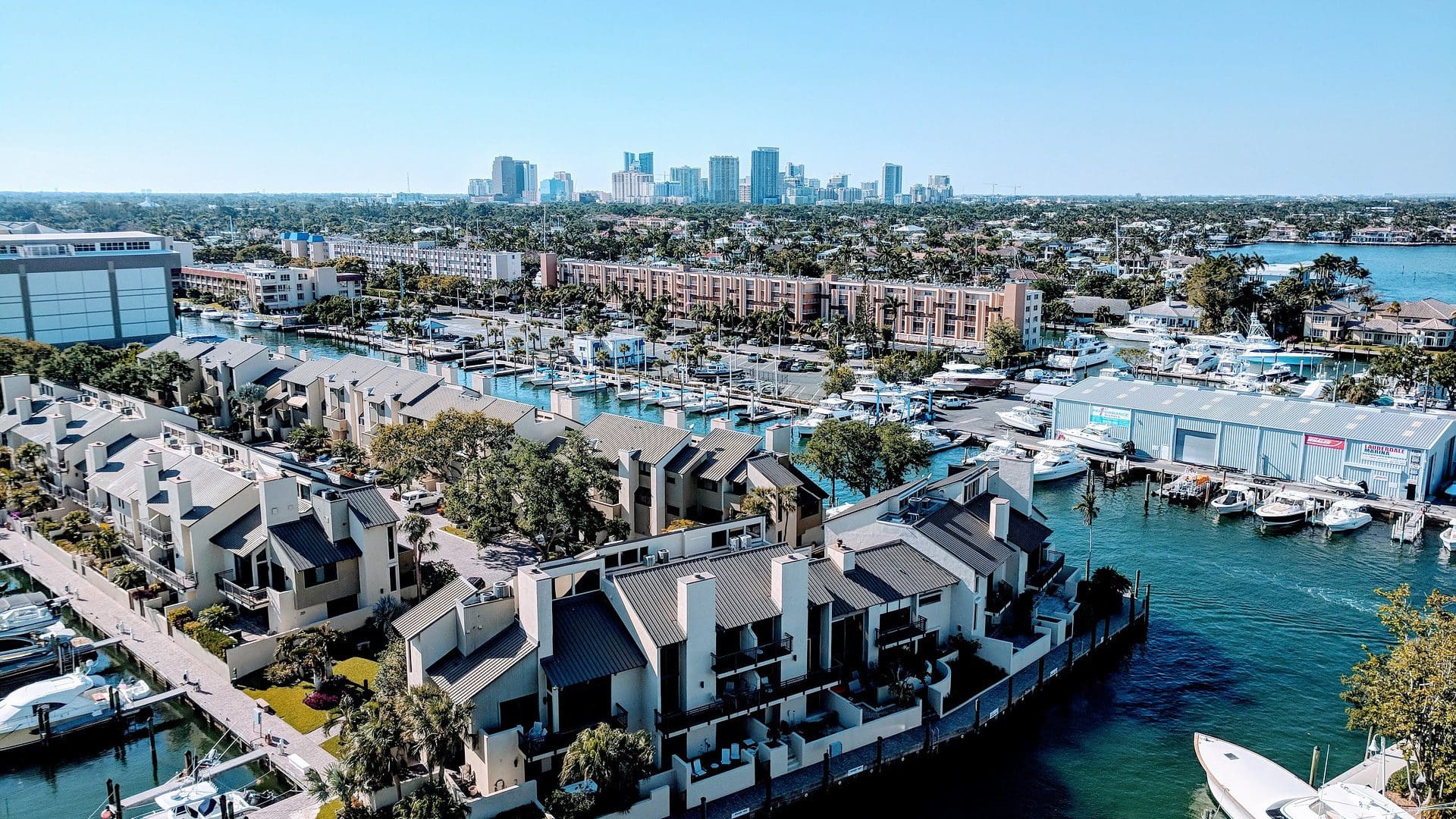May 20, 2020
The Role of LRSPs, SSARs, and Vision Zero Plans in Multidisciplinary Safety Planning
Where there are transit stops, there are people walking.
If there’s a midblock transit stop on an arterial, what’s going to happen when people are late for the bus?
They’re going to run across the street to catch the bus.
Historically, the transportation profession’s tendency has been to make improvements to corridors like these in response to pedestrian injuries or fatalities occurring. There is now an awareness and movement in the industry to change this approach – to identify what we know creates risk and address those conditions before people are hurt.
The Federal Highway Administration and state Departments of Transportation characterize the movement to be more proactive as systemic safety. It is an approach to reducing traffic injuries and fatalities by being proactive, broad-reaching, and multidisciplinary, targeting projects, programs and policies that reduce crash risk.
Let’s break down the elements we are using to define systemic safety:
- Proactive means identifying risk factors associated with crashes, and making adjustments to reduce that crash risk before crashes occur, not after.
- Broad-reaching means implementing low-cost countermeasures at many locations to reduce crash risk. It’s often the case that low-cost adjustments can be made throughout a community treating locations with similar roadway characteristics with a similar set of countermeasures to reduce crash risk.
- Multidisciplinary means getting everyone to the table – school districts, transit operators, law enforcement, public health, community members, and others – to identify opportunities to leverage education, enforcement, and emergency services in reducing crashes and crash severity. Education treatments could include partnering with schools and public health organizations to address recurring behaviors that are known to be risky, such as driving while under the influence of alcohol or drugs. Enforcement activities may include partnering with law enforcement to make sure people adhere to safe behaviors, such as driving at safe speeds, or improving crash reporting procedures. Emergency services solutions may focus on identifying areas with long-response times to identify service improvements to help improve response times.
To guide communities toward a proactive, systemic, and multidisciplinary approach to safety, documented safety plans are encouraged and becoming increasingly required at the state level in order to receive funding.
Types of Transportation Safety Plans
Transportation safety plans come in many shapes and sizes, but here are three commonly required or encouraged planning documents.
A Local Roadway Safety Plan (LRSP), also referred to as a Transportation Safety Action Plan (TSAP) in some states, is a plan documenting the vision, goals, and actions set through multidisciplinary collaboration among local agencies. It provides a framework for organizing stakeholders to identify, analyze, and prioritize roadway safety improvements. These improvements are informed by data analysis, looking at the crash patterns and trends specific to that community.
A Vision Zero Plan is similar to an LRSP, but with a high level of accountability: a specific goal of reducing fatal and severe crashes to zero by an agreed-upon date. A Vision Zero plan has a political focus as well, serving as a call from local leadership to address high injury networks and apply resources to address safety issues. A Vision Zero plan sets out specific, measurable actions to achieve the goal of zero traffic deaths or serious injuries.
Some safety evaluations are more engineering-focused. In California, this is the Systemic Safety Analysis Report (SSAR). A SSAR is a technical analysis to prioritize projects and set up agencies with designs, cost estimates, and grant applications for funding. In addition to the greater emphasis on the engineering side, it differs from an LRSP in that it does not include a vision and goals for the future – rather, it serves as a snapshot of safety at that point in time. A SSAR can be built upon to become a safety plan, which is what several agencies in California are doing to round out how they plan for and improve safety.
6 Examples of Innovative Systemic Safety Plans
It’s an alphabet soup, but each of these safety plans and analyses has an important and specific role in supporting its community toward safer streets. At Kittelson, we have had the opportunity to support many agencies with LRSPs, TSAPs, SSARs, and Vision Zero plans, and have been encouraged and inspired by the way that many agencies are proactively working to improve transportation safety outcomes. Here are a few innovative examples from our clients.

Anchorage Vision Zero Action Plan
The Municipality of Anchorage‘s Vision Zero Plan is a data-driven approach to identify measurable and implementable actions for designing safer streets, educating the public, changing policies, and enforcing safe behavior. The Action Plan was used to leverage a public health grant to fund implementation of the plan over a five-year period.
To understand where, why, and how crashes are happening, we looked beyond the typical engineering toolbox to fully consider human factors, public awareness, equity, emergency services, encouragement, enforcement, education, and evaluation. For example, we used hospital records to analyze demographic data and identify crash trends by populations. Using this data, we facilitated focus groups with non-profit agencies that serve the most vulnerable, underserved populations to define equity issues, risk to the populations and potential solutions. We also completed a pedestrian intercept survey at transit stops to understand community concerns, with a focus on disadvantaged groups and vulnerable users who are actively using the high injury network.

Clackamas County Transportation Safety Action Plan (TSAP)
Much of Clackamas County, Oregon is rural in nature, encompassing the Cascade foothills and western slope of Mt. Hood. As part of initiating a safety culture, the County is collaborating with residents and state, regional, and local agencies to reduce fatal and serious injury crashes on County roadways by half in the next ten years.
A multidisciplinary approach to Clackamas County’s Transportation Safety Action Plan led to action items covering a range of topics, including young/senior drivers, aggressive driving, impaired driving, vulnerable users, EMS, vehicle technology, safety culture, as well as engineering-related projects and policies. We even had a former trauma nurse as a subconsultant supporting us on the project. The Clackamas County Transportation Safety Action Plan won a National Association of Counties 2013 Planning Achievement Award, Best in Category, Exceptional Results and Unique Innovations.

Broward MPO Bicycle & Pedestrian Safety Action Plan
Broward County is one of the three counties in South Florida that make up the Miami metropolitan area. Rather than jumping right into specific safety improvement projects, the Broward Metropolitan Planning Organization‘s (MPO) Bicycle & Pedestrian Safety Action Plan was a thoughtful step to better understand the systemic walking and bicycling safety issues in Broward County. It was a plan developed to answer the question: what ultimately needs to change to make the system holistically safer?
The plan identified four calls to action for the MPO, partnering agencies, and the community:
- Set the Stage: Enact transportation and land use plans and policies that better supports all users and all modes of transportation.
- Create Safe Streets: Implement complete streets projects and evaluation measures that go beyond a focus on vehicles and prioritize walking, bicycling, and riding transit.
- Prevent Aggressive Behavior: Enhance training of law enforcement officers and the public on pedestrian and bicycle safety laws, conduct targeted enforcement, and take legal action.
- All Hands on Deck: Coordinate an identified diverse group of advocates that will lead and support moving forward an agreed upon vision for pedestrian and bicycle safety.
Broward MPO staff worked alongside a steering committee known as the Advocacy Team (or “A Team”) to guide this effort and participate in the data analysis and field reviews. As part of the plan, the Advocacy Team identified five crash hot spots and classified these hot spots into five different typologies (urban intersection, suburban intersection, urban corridor, suburban corridor, and beach access corridor) as a way to expand the application of the crash analyses countywide. This team identified a priority list of action items to pursue based on feedback from the data and analysis. Since the adoption of the Plan, the MPO has been making strides moving the action items forward and recently won an award for their updated Complete Streets Guidelines.

Lake Tahoe Safety Strategy
The Lake Tahoe region experiences huge fluctuations in traffic throughout the year, ranging from peak periods with congestion to non-peak periods when not much roadway capacity is necessary. The Tahoe Regional Planning Agency (TRPA), which is composed of several jurisdictions in both California and Nevada, sought to address these fluctuations in traffic without overbuilding and while providing more facilities and safer conditions for bicyclists and pedestrians. Another unique challenge was meeting the regulatory and environmental constraints of two states.
Kittelson conducted a safety analysis of the Lake Tahoe region that identified systemic risk factors across the region and priority locations for safety improvements. This analysis was incorporated into a broader Lake Tahoe Region Safety Strategy, identifying opportunities for improving coordination between jurisdictions, addressing safety across the region, and standardizing crash data from two state databases. To help establish data consistency for safety within region, our team identified opportunities for future improvements on how crash data is collected and reported.
The Safety Strategy also developed a multimodal evaluation methodology to allow projects within the Tahoe Region to consider the safety of all road users during project development. TRPA has been applying the evaluation methodology and tool on current projects, and the Safety Strategy helped agencies in the region secure California HSIP Cycle 9 grant funding for regionally-significant safety improvements.

Photo by Ken Lund
Tehama County Systemic Safety Analysis Report (SSAR)
Tehama County is a rural county in northern California, and this project was one of many California SSARs that we’ve had the opportunity to support. The Tehama County SSAR exemplifies how a safety management process can help rural counties prioritize improvements for large roadway networks and capitalize on opportunities to package roadway improvements into combined grant applications. The Tehama County SSAR and subsequent grant applications led to Tehama County receiving $2.5 million in improvements in HSIP funding and have set them up for additional grant applications in upcoming grant cycles.
In assembling this SSAR, we were able to have open conversations about safety with County staff and use those conversations to focus our analytical work and discuss new opportunities for the County to explore with future projects, expanding their “safety toolkit” and encouraging new approaches to thinking about safety. We identified not only safety projects, but also other actions that the County could take (e.g., exploring addressing underage DUI crashes with the local school district) to address safety emphasis areas in the County. We also conducted a comprehensive training on safety management best practices and analytical methods to set them up to carrying forward the safety management process established in the SSAR.

FDOT D6 Districtwide Network Screening Analysis
The Florida Department of Transportation, District 6 Network Screening Analysis was the first network screening conducted in the area, and an initiative that helped shed light on safety in the entire network.
Kittelson supported FDOT D6 in applying the network screening methodologies described in the Highway Safety Manual (HSM). Districtwide crash data was combined with roadway characteristics data obtained from the Roadway Condition Index (RCI) to better understand the potential risk characteristics associated with the crashes.
The HSM identifies 13 possible performance measures for conducting a network screening evaluation. Using multiple performance measures to evaluate a network has the potential to improve the level of confidence in selecting locations most likely to benefit from safety improvements. For this analysis, we used crash rate and equivalent property damage only (EPDO), which assigns weighting factors to crashes by severity to develop a combined frequency and severity score for each site. The final product was a list of priority locations for safety improvements, ranked within ten emphasis areas of the 2015 Strategic Highway Safety Plan (SHSP) to characterize the district’s safety needs.
Continue the Conversation
We’re grateful to work with clients who put in the effort to truly understand their communities’ needs and who is most impacted, and work toward proactive, systemic, and multidisciplinary change.
To talk further about any of the safety plans described in this article, or to discuss the needs and challenges your community is seeing, please reach out! We’d love to continue the conversation.
